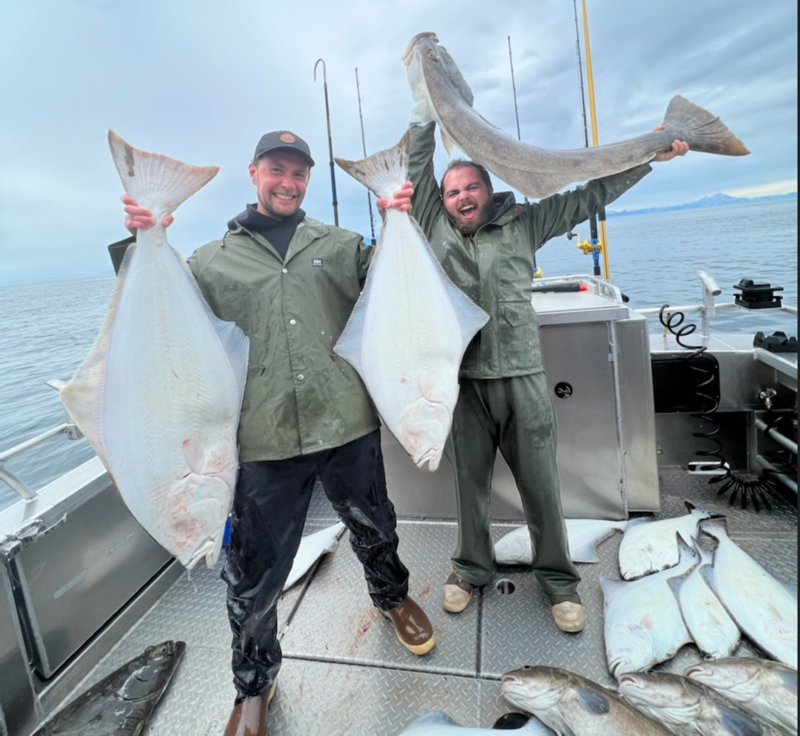Destination Alaska Blog
2024 IPHC HALIBUT RULES FOR 3A AND WHY IT IS IMPORTANT FOR YOU!
2024 Halibut Regulations
- 2 Halibut Per Person Per Day
- One Fish Any Size
- One Fish Under 28 Inches
- No Annual Limit
- No Halibut Fishing on Wednesdays
- All Tuesdays are Open!
WHY IS IT IMPORTANT?
How is this different from 2023? Tuesdays are back! Wednesday is now our only closure day. This has a huge positive economic impact on the local charter fleet. This increases the number of halibut trips we can run in a season by 14%! These rulings fluctuate every year based the prior year's catch. It is only through the hard work of our local representatives that we can have a voice in this decision and maintain positive change in our industry! But, what does it mean for you? It gives you more flexibility on what day you book your halibut charter!

Book Your Halibut Fishing Trip Today! Book Here!





Who is the IPHC?
The International Pacific Halibut Commission (IPHC) plays a crucial role in managing and conserving the Pacific halibut, a highly sought-after flatfish that inhabits the North Pacific Ocean. Established through an international treaty, the IPHC is a unique organization tasked with ensuring the sustainable management of the Pacific halibut resource, spanning waters off the coasts of the United States and Canada.
Historical Background:
The IPHC was formed in 1923 in response to growing concerns about the declining Pacific halibut population. The United States and Canada recognized the need for a cooperative effort to regulate and conserve this valuable fishery. The result was the signing of the Convention between the United States of America and Canada for the Preservation of the Halibut Fishery of the Northern Pacific Ocean and Bering Sea in 1923, which officially established the IPHC.
Mandate and Objectives:
The primary objective of the IPHC is to manage the Pacific halibut fishery in a manner that ensures its sustainability while providing for the optimum yield. The IPHC employs science-based approaches to set catch limits, monitor stock status, and implement regulations that promote responsible harvesting practices.
Key Functions:
Stock Assessment: The IPHC conducts comprehensive scientific assessments of the Pacific halibut stock. These assessments involve collecting data on the abundance, distribution, and biological characteristics of the fish population. The gathered information is used to make informed decisions on sustainable catch limits.
Setting Catch Limits: Based on the scientific assessments, the IPHC establishes annual catch limits for each regulatory area within its jurisdiction. These limits are designed to prevent overfishing and promote the long-term health of the Pacific halibut population.
Regulatory Measures: The IPHC implements a range of regulatory measures to control fishing activities. This includes setting size limits, establishing fishing seasons, and allocating catch quotas among different user groups. These measures aim to strike a balance between conservation and the economic interests of the fishing industry.
International Cooperation: As an international organization, the IPHC fosters collaboration between the United States and Canada. Regular meetings and consultations between the two countries allow for the exchange of scientific data, assessment methodologies, and best practices in fisheries management.
Enforcement: The IPHC works in conjunction with national authorities to enforce its regulations. Monitoring, control, and surveillance measures are implemented to ensure compliance with catch limits and other conservation measures.
Challenges and Future Outlook:
The IPHC faces several challenges in its mission to sustainably manage the Pacific halibut fishery. Climate change, ecosystem dynamics, and the complex interaction between halibut and other species pose ongoing challenges for effective management. Additionally, balancing the needs of various stakeholders, including commercial and recreational fishers, Indigenous communities, and conservationists, requires careful consideration and negotiation.
As the IPHC continues to adapt to new challenges, ongoing research, technological advancements, and international cooperation will be essential to maintaining the health of the Pacific halibut population and the economic viability of the fishery.
The International Pacific Halibut Commission plays a critical role in the sustainable management of the Pacific Halibut fishery, demonstrating the importance of international collaboration in addressing shared environmental challenges. By combining scientific expertise with effective regulatory measures, the IPHC strives to strike a balance that ensures the long-term health of the Pacific halibut population while supporting the livelihoods of those dependent on this valuable marine resource.

































